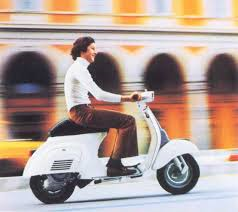|
This page was exported from The Vespa Guide
[ http://vespaguide.com ] Export date: Thu Apr 3 12:27:34 2025 / +0000 GMT |
Vespa Small Frame Buyers Guide (Part 2) Originally Posted: Published: http://www.scooteristscene.comTHE VESPA SMALL FRAME MODELS During the three decades that the small frame Vespa was produced, over 30 models were released to the general public. As well as being built in Italy, they were also made under licence in Spain and India. It would be near impossible to try to cover all these models in this one-off article and would be more suitable for a ‘spotter's guide' rather than a ‘buyer's guide'; so only the more common and familiar models will be covered. As they all share the same frame and engine design, then what's valid on a 1964 Vespa 90 will be just as valid on a 1992 Vespa 50 – the exception being such things as electronic ignition and indicators. The models that are most common on the British market are the V90/100cc, the 50 Special, PK50-125cc, Primavera/ ET3 and (although hardly common) arguably the finest small frame ever made – the SS90. CHECKLIST – FRAME  When it comes to buying a Vespa small frame, there are certain things that you must be aware of before slapping down your hard earned cash. As with any motor vehicle of a certain age, small frames have no doubt had more than one less-than-careful owner. These individuals have mercilessly thrashed the engine to within an inch of its life, tried to re-enact the career of Evil Knievel, or maintained it as much as your average sundial. When it comes to buying a Vespa small frame, there are certain things that you must be aware of before slapping down your hard earned cash. As with any motor vehicle of a certain age, small frames have no doubt had more than one less-than-careful owner. These individuals have mercilessly thrashed the engine to within an inch of its life, tried to re-enact the career of Evil Knievel, or maintained it as much as your average sundial.With the frame there are certain things that you should be checking. Rust is always the biggest and most obvious danger to most Vespa chassis, so check around the seams and edges of the frame to see if there's any rust forming. Ask the seller if you can check underneath with something like a screwdriver (or similar). Tap all around the bottom of the legshields and runner boards to see if there are any major rust patches which have broke through or about to form. If the seller isn't too keen on this idea then walk away; there will be other machines for sale… If the scooter has been hit hard in an accident, which has knocked the frame out of line, then there's nearly always a crease mark below the horncast area of the frame – on the section where the chassis curves round to the rear. This area is normally hidden by the mudguard, so get on your hand and knees and check this area by turning the forks from side-to-side. The forks also would have suffered in such an incident, so check to see if they are straight and true. Look at them from a sideways-on view and imagine a line going down the fork stem right through to the hub centre. If there's any deviation then you'll spot it right away. Other symptoms are tight steering on one side or the other and if the steering stops are damaged then this is an indication that the forks have been knocked around either way and are possibly bent as a result. The legality of the machine goes without saying. The frame number or prefix can be found underneath the right-hand side (flywheel) panel. The frame number should be at the top of the frame – where the panel sits in. Check around this area to see if the number has been re-stamped or cut out and replaced with another number. Ask to see the V5 and maybe run the numbers by the DVLA via their website, or get a vehicle check by an organisation such as the RAC or AA. Scooter forums are another good source of information regarding the legitimacy of machines; sites such as www.smallframeforum.com has many enthusiasts who will be more than willing to help you avoid the pitfalls of buying a dodgy machine. CHECKLIST – ENGINE As with the P range engine unit, high mileage small frame Vespas can suffer from jumping out of gear due to a worn cruciform. Where the PX lump has a habit of filling the gearbox with petrol due to blown oil seal, the small frame will tend to air leak and drink the gearbox oil (much like a Lambretta). On starting the engine you'll be greeted with the lovely smell of burning gearbox oil and a smoke screen the Red Arrows would be proud of. Check the gear selector shaft – a worn example will leak oil, though this can be cured with oversized O-rings. The engine number and prefix can be found on the back of the casing just below the mounting bracket for the rear shock absorber. Once again check for any signs of alteration and tampering. |
|
Post date: 2014-10-12 03:38:07 Post date GMT: 2014-10-12 03:38:07 Post modified date: 2014-10-12 03:38:07 Post modified date GMT: 2014-10-12 03:38:07 |
| Powered by [ Universal Post Manager ] plugin. HTML saving format developed by gVectors Team www.gVectors.com |